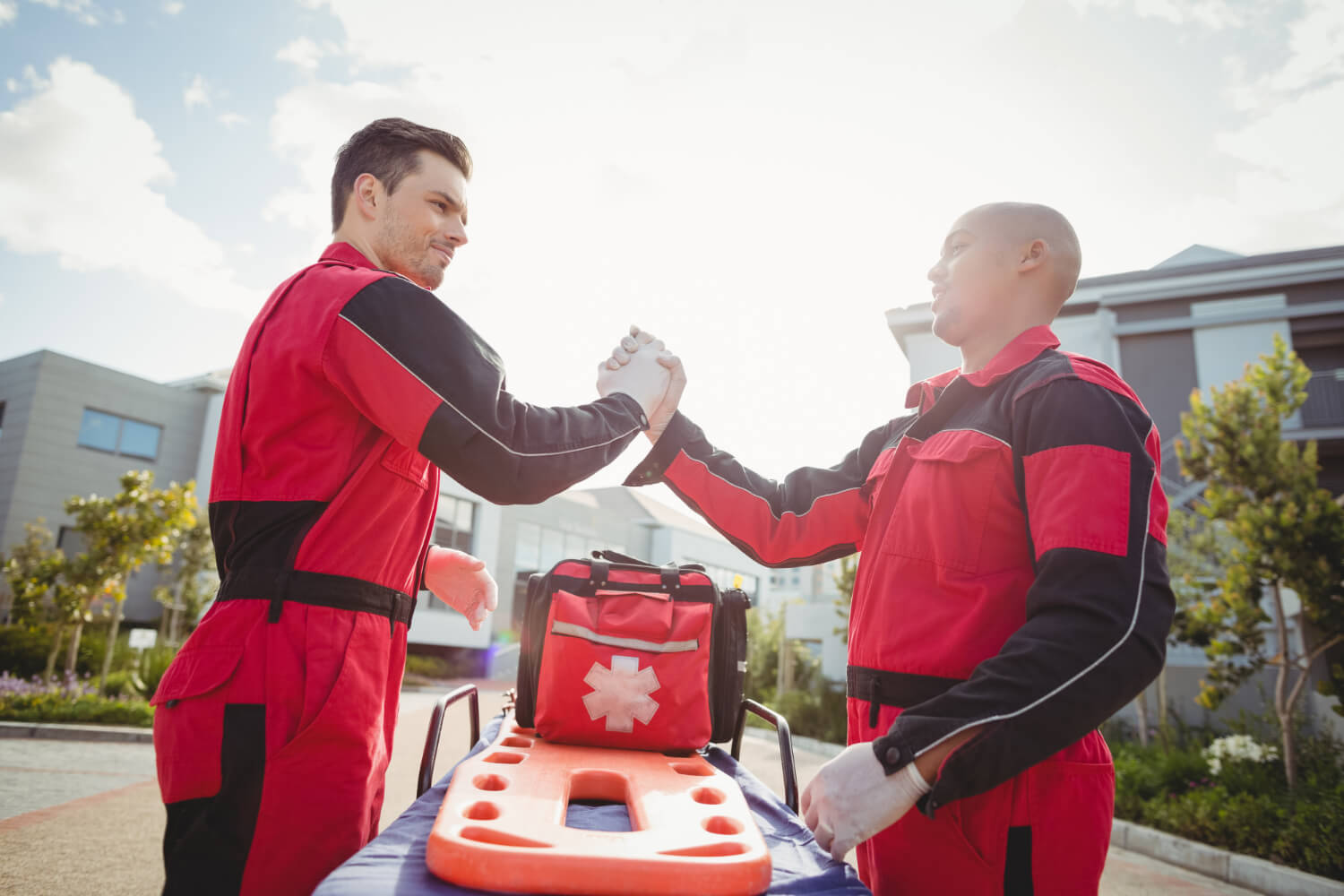How do I renew my AHA Certification?

How do I renew my AHA Certification?

Renewing your American Heart Association (AHA) certification is a crucial step for healthcare professionals who wish to maintain their credentials and stay current with the latest guidelines in life-saving techniques. This article will guide you through the process of renewing your AHA certification, ensuring you meet all necessary requirements and deadlines.
Understanding the Importance of AHA Certification
AHA certification is a testament to a healthcare professional’s proficiency in life-saving procedures such as CPR (Cardiopulmonary Resuscitation), BLS (Basic Life Support), ACLS (Advanced Cardiovascular Life Support), and PALS (Pediatric Advanced Life Support). This certification is vital for those working in emergency medical services, hospitals, and other healthcare settings. Regular renewal of your AHA certification is essential to ensure that you are up to date with the latest protocols and techniques.
When to Renew Your AHA Certification
The validity of AHA certifications typically spans two years. It is advisable to begin the renewal process several months before your certification expires. Early renewal allows ample time to complete required coursework, schedule exams, and address any unforeseen delays. Keeping track of your certification expiration date is essential to avoid lapses that could impact your professional standing.
Steps to Renew Your AHA Certification
Step 1: Determine Your Certification Status
Before beginning the renewal process, verify your current certification status. This can be done by checking the expiration date on your AHA certification card or by contacting the AHA directly. Understanding your certification status will help you determine the urgency of the renewal process.
Step 2: Choose the Appropriate Renewal Course
AHA offers various renewal courses based on the type of certification you hold. Each course is designed to update your knowledge and skills in specific areas of life support. Common renewal courses include:
- BLS Renewal: For healthcare providers who need to refresh their basic life support skills.
- ACLS Renewal: For professionals requiring advanced cardiovascular life support recertification.
- PALS Renewal: For those specializing in pediatric advanced life support.
Select the renewal course that aligns with your certification type and professional needs.
Step 3: Enroll in an Accredited AHA Renewal Course
To ensure the validity of your renewed certification, enroll in an accredited AHA renewal course. These courses are available through various training centers, including hospitals, community colleges, and online platforms. Ensure the course provider is recognized by the AHA to avoid any issues with certification validity.
Step 4: Complete the Required Coursework and Training
Renewal courses typically include a combination of online learning modules and hands-on training sessions. The coursework is designed to reinforce your understanding of life-saving techniques and update you on any changes to AHA guidelines. Actively participate in all training sessions to ensure a thorough understanding of the material.
Step 5: Pass the Renewal Exam
Upon completing the coursework and training, you will be required to pass a renewal exam. The exam assesses your knowledge and skills in the specific life support techniques covered in your renewal course. It is essential to prepare thoroughly and approach the exam with confidence. Successful completion of the exam is a critical step in the renewal process.
Step 6: Receive Your Renewed AHA Certification
After passing the renewal exam, you will receive your renewed AHA certification card. This card serves as proof of your updated credentials and is valid for another two years. Keep this card in a safe place and make a note of the new expiration date to ensure timely future renewals.
Benefits of Renewing Your AHA Certification
Enhanced Professional Credibility
Maintaining an up-to-date AHA certification demonstrates your commitment to excellence in patient care. It enhances your professional credibility and can positively impact your career prospects in the healthcare industry.
Improved Patient Outcomes
Renewing your AHA certification ensures that you are knowledgeable about the latest life-saving techniques and guidelines. This knowledge directly contributes to improved patient outcomes in emergency situations.
Compliance with Employer and Regulatory Requirements
Many healthcare employers and regulatory bodies require current AHA certification as a condition of employment. By renewing your certification, you ensure compliance with these requirements and avoid potential employment issues.
Continued Professional Development
AHA renewal courses provide an opportunity for continued professional development. They allow you to stay informed about advancements in life-saving techniques and integrate these advancements into your practice.
Challenges in Renewing AHA Certification
Time Management
Balancing work, personal commitments, and the demands of renewing your AHA certification can be challenging. Effective time management is crucial to ensure that you can complete the renewal process without significant disruptions to your routine.
Access to Accredited Courses
Finding accredited AHA renewal courses that fit your schedule and location can sometimes be difficult. Online courses offer flexibility, but hands-on training may require in-person attendance. Plan ahead to secure a spot in a course that meets your needs.
Financial Considerations
The cost of AHA renewal courses and exams can be a concern for some professionals. Budgeting for these expenses in advance can help alleviate financial stress and ensure a smooth renewal process.
Tips for a Smooth AHA Certification Renewal
Start Early
Begin the renewal process several months before your certification expires. This allows ample time to complete all required steps and address any potential issues that may arise.
Stay Organized
Keep track of important dates, required documents, and course materials. Staying organized will help streamline the renewal process and reduce the likelihood of errors or delays.
Utilize Online Resources
Take advantage of online resources provided by the AHA and other reputable organizations. These resources can offer valuable information, practice exams, and study guides to aid in your renewal preparation.
Seek Employer Support
Many healthcare employers offer support for AHA certification renewal, including financial assistance and flexible scheduling. Discuss your renewal plans with your employer to explore available support options.
Frequently Asked Questions (FAQs)
How often do I need to renew my AHA certification?
AHA certifications typically need to be renewed every two years. It’s important to keep track of your expiration date and begin the renewal process well in advance to avoid lapses in certification.
Can I renew my AHA certification online?
Yes, many AHA renewal courses offer online components, including coursework and exams. However, certain skills assessments may still require in-person attendance. Verify the specific requirements of your renewal course.
What happens if my AHA certification expires?
If your AHA certification expires, you may need to complete a full certification course rather than a renewal course. It’s crucial to renew on time to avoid this additional requirement.
How much does it cost to renew my AHA certification?
The cost of renewing AHA certification varies depending on the type of certification and the CPR course provider. It’s advisable to budget for these expenses and check with your employer for potential financial support.
Are there any prerequisites for renewing my AHA certification?
Prerequisites for renewing AHA certification typically include holding a current, unexpired certification and completing the required renewal coursework and exam. Specific requirements may vary based on the type of certification.
Can I renew my AHA certification if I am not currently employed in healthcare?
Yes, you can renew your AHA certification even if you are not currently employed in healthcare. Maintaining your certification can be beneficial for future employment opportunities and ensuring your skills remain current.
Where can I find accredited AHA renewal courses?
Accredited AHA renewal courses are offered by various training centers, including hospitals, community colleges, and online platforms. Ensure the course provider is recognized by the AHA to ensure the validity of your renewed certification.
Conclusion
Renewing your AHA certification is a critical step in maintaining your professional credentials and ensuring that you are prepared to provide the highest level of care in emergency situations. By understanding the renewal process, selecting the appropriate course, and preparing thoroughly, you can successfully renew your AHA certification and continue to excel in your healthcare career. Remember, staying current with your AHA certification not only benefits your professional growth but also enhances the quality of care you provide to your patients.


